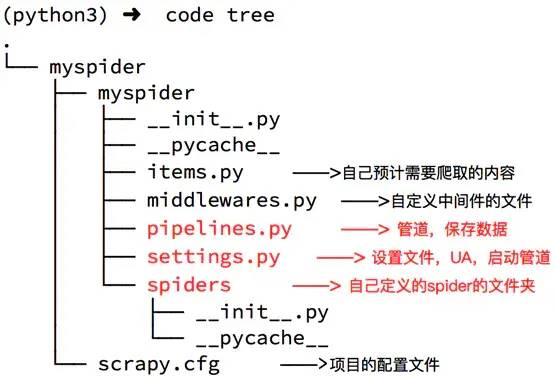使用Python實現(xiàn)批量ping操作方法
在日常的工作中,我們通常會有去探測目標(biāo)主機(jī)是否存活的應(yīng)用場景,單個的服務(wù)器主機(jī)可以通過計算機(jī)自帶的DOS命令來執(zhí)行,但是業(yè)務(wù)的存在往往不是單個存在的,通常都是需要去探測C段的主機(jī)(同一個網(wǎng)段下的存活主機(jī)),這樣使用DOS來進(jìn)行操作是不可取,探測的速度太慢了,不滿足實際需要。一般批量的操作需要使用腳本進(jìn)行一鍵部署執(zhí)行,本文主要通過使用Python語言來實現(xiàn)批量ping的操作(使用多線程實現(xiàn)Python批量處理)
Python版本 :Python3
使用的第三方庫:subprocess, logging, threading, queue
日志導(dǎo)出模塊功能:
def set_logging_format(): logging.basicConfig(level=logging.INFO, format=’%(message)s’, filename=’ping_host.log’, filemode=’w’ ) console = logging.StreamHandler() console.setLevel(logging.INFO) formatter = logging.Formatter(’%(message)s’) console.setFormatter(formatter) logging.getLogger(’’).addHandler(console)多線程實現(xiàn)批量操作:threads = [] THREAD_NUM = 20 user_iput = input(’please input modren: ’) if user_iput == ’addr’: IP_L = IP_LIST if user_iput == ’file’: IP_L = IP_QUEUE for i in range (THREAD_NUM): t = threading.Thread(target = ping_IP,args = (IP_L,)) threads.append(t) for i in range (THREAD_NUM): threads[i].start() for i in range (THREAD_NUM): threads[i].join()
完整代碼部分:
import subprocessimport loggingimport datetimeimport timeimport threadingfrom queue import Queueimport sys# 實現(xiàn)日志導(dǎo)出def set_logging_format(): logging.basicConfig(level=logging.INFO, format=’%(message)s’, filename=’ping_host.log’, filemode=’w’ ) console = logging.StreamHandler() console.setLevel(logging.INFO) formatter = logging.Formatter(’%(message)s’) console.setFormatter(formatter) logging.getLogger(’’).addHandler(console)# 將需要ping 連接的IP加入隊列def insert_ip_queue(ip_list_path): IP_QUEUE = Queue() with open (ip_list_path,’r’) as f: for ip in f.readlines(): IP_QUEUE.put(ip) f.close() return IP_QUEUEdef IP_list (): ip_list = Queue() for i in range (1,255): ip = ’192.168.1.’ + str(i) ip_list.put(ip) return ip_list# print (IP_list())#print (IP_list())#定義 ping 函數(shù)def ping_IP (IP_QUEUE): while not IP_QUEUE.empty(): ip = IP_QUEUE.get().strip(’n’) #print (ip) res = subprocess.call(’ping -w 1000 -n 1 %s’ % ip , stdout=subprocess.PIPE,shell=True) #print (res) if res == 0: h =subprocess.getoutput(’ping’ + ’ ’ + ip) #print (h) if ’TTL=’ in h:res = (’網(wǎng)絡(luò)可以正常連通平均延時 = %s’ % h.split(’平均 = ’)[1]) else: res = ’網(wǎng)絡(luò)連接失敗!’ today = datetime.datetime.now().strftime('%Y - %m - %d %H : %M : %S') logging.info('%s IP = %s %s' % (today,ip,res))def main (): set_logging_format() ip_list_path = ’./hostip.txt’ IP_QUEUE = insert_ip_queue(ip_list_path) IP_LIST = IP_list() threads = [] THREAD_NUM = 20 user_iput = input(’please input modren: ’) if user_iput == ’addr’: IP_L = IP_LIST if user_iput == ’file’: IP_L = IP_QUEUE for i in range (THREAD_NUM): t = threading.Thread(target = ping_IP,args = (IP_L,)) threads.append(t) for i in range (THREAD_NUM): threads[i].start() for i in range (THREAD_NUM): threads[i].join()if __name__ == ’__main__’: main()
到此這篇關(guān)于使用Python實現(xiàn)批量ping操作的文章就介紹到這了,更多相關(guān)使用Python實現(xiàn)批量ping操作內(nèi)容請搜索好吧啦網(wǎng)以前的文章或繼續(xù)瀏覽下面的相關(guān)文章希望大家以后多多支持好吧啦網(wǎng)!
相關(guān)文章:
1. 一文讀懂python Scrapy爬蟲框架2. Python如何批量生成和調(diào)用變量3. 通過CSS數(shù)學(xué)函數(shù)實現(xiàn)動畫特效4. ASP.Net Core對USB攝像頭進(jìn)行截圖5. Python獲取B站粉絲數(shù)的示例代碼6. .net如何優(yōu)雅的使用EFCore實例詳解7. windows服務(wù)器使用IIS時thinkphp搜索中文無效問題8. ajax動態(tài)加載json數(shù)據(jù)并詳細(xì)解析9. python實現(xiàn)自冪數(shù)的示例代碼10. ASP.NET MVC實現(xiàn)橫向展示購物車

 網(wǎng)公網(wǎng)安備
網(wǎng)公網(wǎng)安備